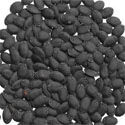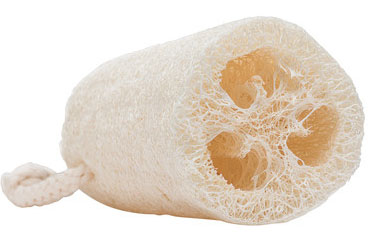No products

The Loofah!
The most misunderstood shower accessory of all time: the loofah!
It does not come from the sea. It is not an animal. Luffa is a genus of tropical and subtropical vines that are part of the same family as cucumbers, squash, pumpkins and other gourds. It grows in tropical climates or other places that have, at least, a 110-day long warm season.
Loofah seeds

Before it becomes a sponge, Loofah is a seed!
The young fruit is edible, although probably not particularly tasty. It is used primarily in Asian dishes.
There are several species, including the ‘Luffa aegyptiaca’, ‘Luffa cylindrica’ – native to India – the ‘Luffa acutangula’ -known as the angled or ridged luffa- and the ‘Luffa operculata’- the Wild loofa or sponge cucumber.
Disinfect your natural Loofah at least once a week. It can be microwaved for 20 seconds or soaked in a 1:9 bleach-to-water solution for 1 minute to ensure total decontamination of the sponge. DO NOT put your acrylic sponge or bath scrubber in the microwave. It will melt! However, those can be safely soaked in the bleach solution recommended here.
In fact, all exfoliative sponges and devices – synthetic sponges, natural sponges, pumice stones – need to have regular bleach treatment to reduce the possibility of transmitting bacteria to the skin.
In between disinfecting sessions, be sure to let your loofah thoroughly dry between uses. Take the loofah out of that moist environment. Remove it from the shower area so that enough airflow can circulate around it to completely dry it out between uses. Leave a window open for more airflow. If you want to be extra cautious, soap up the loofah and rinse it out on its own once you have finished with it and then hang it to dry.
Replace it as soon as it changes colour or begins to smell. I’d recommend getting a new loofah at least once every three months if you are following a disinfection routine for the sponge. Otherwise, you may need to replace it more often.

A Loofah sponge ready for use.
During the 1970s I began making and selling jewellry, a passion I shared with my mum, through local businesses. Together, we made hundreds of pieces of everyday accessories to wedding accessories. From 1980 to 1993 I was an integral part of the team of successful small business entrepreneurs behind Boaz Junction, a local women's wear store here in St. Catharines, Ontario.







